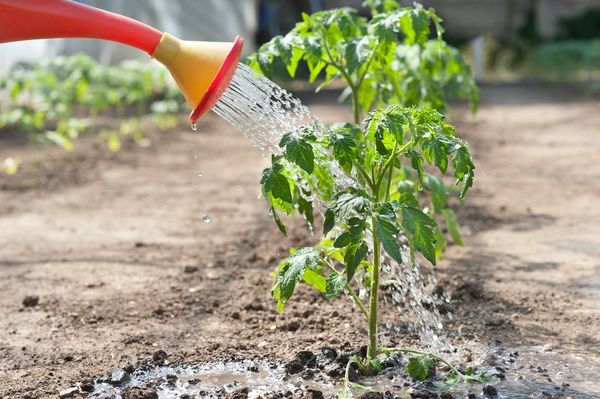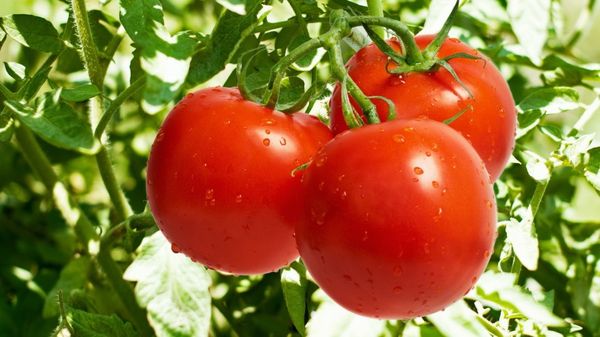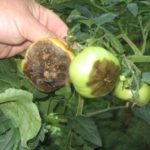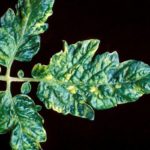Tomatoes, they are tomatoes, appeared in Europe in the 16th century, but they began to use the fruits as food only at the end of the 18th century. Up to this point, the cultivation of tomatoes was carried out exclusively for decorative purposes.
In 1774, an article was published in which they warned that the fruits of tomatoes are capable of driving the mind of those who eat them.
Table of contents
How to grow tomatoes
Tomatoes are a nutritious and healthy vegetable crop.Proper tomato cultivation laborious but fascinating for any gardener. To collect a large crop you need to know the technology and methods of cultivation.
In warm areas, tomatoes are sown immediately in the ground, in other regions, it is customary to seedlings first planted in greenhouses.
From seed
Any universal soil composition or a mixture of peat with sand is poured into a prepared container with drainage holes, plentifully watered. Then take up the seed treatment. Them first warm in a warm place for several days.

After this procedure, planting material soaked in potassium permanganate solution for 30 minutes, then washed well with running water.
The finished seeds are sown in the ground and covered with a film before the first shoots, periodically aired and watered with water at room temperature. The optimal conditions for growth are 23 degrees of heat.
In early summer, tomatoes are transplanted to greenhouses or open ground to grow, depending on climatic conditions.
Planting seedlings in the ground
Tomatoes are planted in the first half of June.The distance between the bushes should be 30-40 centimeters.
At the very beginning, the wells are made and poured abundantly with water. Then the seedlings removed from the tank or greenhouse are immediately placed in the pits and gently sprinkled with earth. Throughout the growth, the soil around the bush is regularly loosened and spud, as the stem quickly rises up and can fall.
Proper care of tomatoes in the garden
Optimal conditions for healthy growth are average daily air temperatures. from 17 to 26 degrees. With a decrease in heat, the plant ceases to develop, and in a strong heat it quickly fades. In the period of active flowering is important bright and diffused sunlight.
In addition to climatic conditions, tomatoes demanding feedings and fertilizers. In order to harvest a rich harvest, it is necessary several times per season to give the plant minerals and organic matter. After the appearance of the fruit, the main emphasis should be placed on potash fertilizers. They will help grow large and juicy tomatoes.
How Tomatoes Grow
Tomatoes are annual plants with a straight or lodging stem. Outwardly, the flowers are a simple, slightly complex or complex curl. There are large and small sizes, usually yellow.
- Tomato flowers
- Variety of fruit colors
Fruits of vegetable culture can also be different in shape, size and color. Contain many beneficial trace elements for the human body.
In particular, they have:
- Soluble sugar.
- Organic acids.
- Pectic substances.
- Vitamins.
- Minerals.
How to choose a grade for planting
In order to grow a lot of delicious tomatoes, quality seeds are required.
Gardeners recommend paying attention to large-fruited varieties. It is they who, in a temperate climate, will have time to ripen and will be able to bring a good harvest.
Tomatoes with small ones will have to be cut off immature and “grow” at home. Such vegetables from dry maturation are dry and tasteless.
Site selection

To plant tomatoes requires a well-lit area or greenhouse. The nursery is pre-disinfected and equipped with bright and diffused light.In addition, the room for tomatoes should be well ventilated, but not allowed inside strong drafts.
If cassettes are used for planting seedlings, they must have openings for outflow of excess moisture. Best for tomatoes suitable soil consisting of peat and sand in equal parts.
Soil should be light and loosewith a good drainage layer. Land on the site before planting is pre-moistened, loosened and removed excess weed.
Soil preparation
Plants love soil made up of porous and lightweight rocks. with good moisture permeability. Preparing the substrate for planting is recommended in the fall. Compost, ashes and egg shells are added to the soil.
During the winter, all elements rot and digest. In the spring, before planting, the bed should warm up well, otherwise the tomatoes will not develop in the cold ground.

Seed preparation
After buying the seeds, they must be processed before planting. For this you need soak them in a solution of potassium permanganate for a few minutes.This procedure will disinfect the planting material.
Then the seeds are washed with warm running water and laid out on a cloth moistened with a growth factor. After several hours, tomatoes can be sown in the prepared and moistened soil.
Landing
Planted them in the first decade of Junewhen the risk of frost disappears completely.
Seedlings are placed in the wells at a distance from each other. not less than 30 centimeters. After that, it is poured abundantly with warm water. Ideal if the tomatoes are planted in rows. So the light falls evenly on all bushes.
Watering
Tomatoes require abundant but infrequent moisture. It is enough to hold the event 1-2 times a week, with water at room temperature. Waterlogging threatens tomatoes with diseases, and the lack of water adversely affects the development of the root system and the formation of fruits.

It is important not to wet the leaves when watering, as this may contribute to the fungal spread and death of the plant.
Fertilizer
For a good harvest necessary nutrients and vitamin complexes.To grow a lot of tasty tomatoes should follow simple rules:
- During the picking of tomatoes required mineral fertilizer.
- During the active formation of the fruit tomatoes are waiting potash fertilizer. During the season 1-2 feeding is recommended.
- When tomatoes grow and begin to ripen, they continue to need fertilizer. At this time you can not use chemical compounds. Enough to make organic matter.
Diseases and pests
Diseases often infect plants throughout their growth, especially those grown in open ground.
- Late blight
- Vertex Rot
- Tobacco mosaic
The most common diseases of tomatoes:
- Late blight, externally manifested as black spots on fruits and leaves.
- Fungal lesions.
- Brown spot, in the form of red-brown spots.
- Vertex rot.
- Tobacco mosaic.
To avoid unpleasant consequences, there are preventive measures:
- Must be used for planting seeds of proven manufacturers, quality and without visible damage.
- If possible, tomatoes are recommended in greenhouses, and not in open ground.
- Sick and damaged tomato bushes should retire immediatelyto avoid further infection.
- You can not plant tomatoes and potatoes in one area.
- It is not recommended to carry out any work with tomatoes, if they are wet.
Despite the fact that tomatoes are a capricious crop and require a lot of time and effort from the gardener, they are able to meet all the expectations and works of their taste and wealth of the crop.





